To Hokuriku in summer
July 22-25, 2022
Photographer / Yoshinori Takahashi
This summer, the rainy season was declared to end early, and the heat wave began in late June. Then, in July, the rainy season returned and unseasonable weather appeared all over the country. Although the weather was completely unpredictable, I visited Tateyama in Toyama Prefecture. Tateyama is accessible to a different world above the clouds by public transportation.
The weather was not heavy rain on the first and second days, but there was a mix of rain. I was able to feel the melody of the scenery in the mist that came and went as I took photos. I set up the tripod at a low angle to blur the aleutian flower in the foreground.
The weather was not heavy rain on the first and second days, but there was a mix of rain. I was able to feel the melody of the scenery in the mist that came and went as I took photos. I set up the tripod at a low angle to blur the aleutian flower in the foreground.
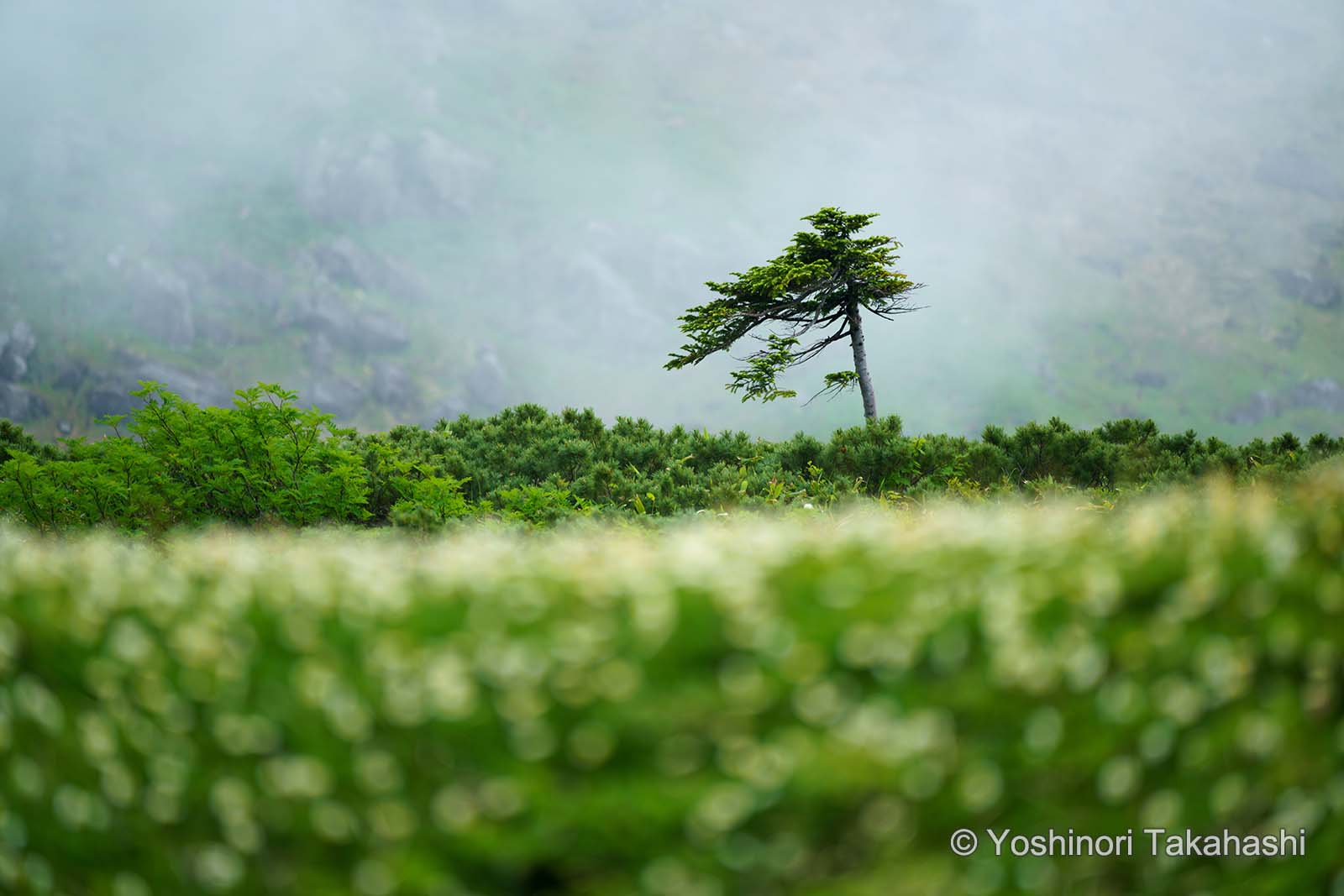
SONY α7R IV / FE100-400mm F4.5-5.6 GM OSS / F5.6 1/250 s ISO-400
The aperture is wide open, and the shutter speed can be said to be suitable for handheld shooting, but the fog moves surprisingly fast, and if you wait until the tree background is ideal, you will miss the chance to take a picture. Also, holding the heavy 100-400mm telephoto zoom lens is a burden. In such cases, a tripod is still needed, and you decide the composition in advance and release the shutter at the timing of the fog.
The more telephoto the camera, the more the screen moves even with a slight shake of the camera, so delicate operation of the head is required, and Markins meets that need. I like to use the Q10i-BK, which has a generous load capacity. First, loosen the knob and roughly frame the shot, then tighten the knob a little so that the head is semi-fixed, and then work on the composition. The stability of this semi-fixed state allows for comfortable shooting.
The more telephoto the camera, the more the screen moves even with a slight shake of the camera, so delicate operation of the head is required, and Markins meets that need. I like to use the Q10i-BK, which has a generous load capacity. First, loosen the knob and roughly frame the shot, then tighten the knob a little so that the head is semi-fixed, and then work on the composition. The stability of this semi-fixed state allows for comfortable shooting.

On the third day, despite the continued unstable weather, we were blessed with fine weather and were able to capture a pleasant blue sky and a group of Acanthus japonica. Framing in the ultra-wide-angle range with a wide angle of view also requires careful attention to all four corners of the screen, which demands delicacy. The tripod head operation is smooth regardless of whether it is a telephoto or wide-angle lens.
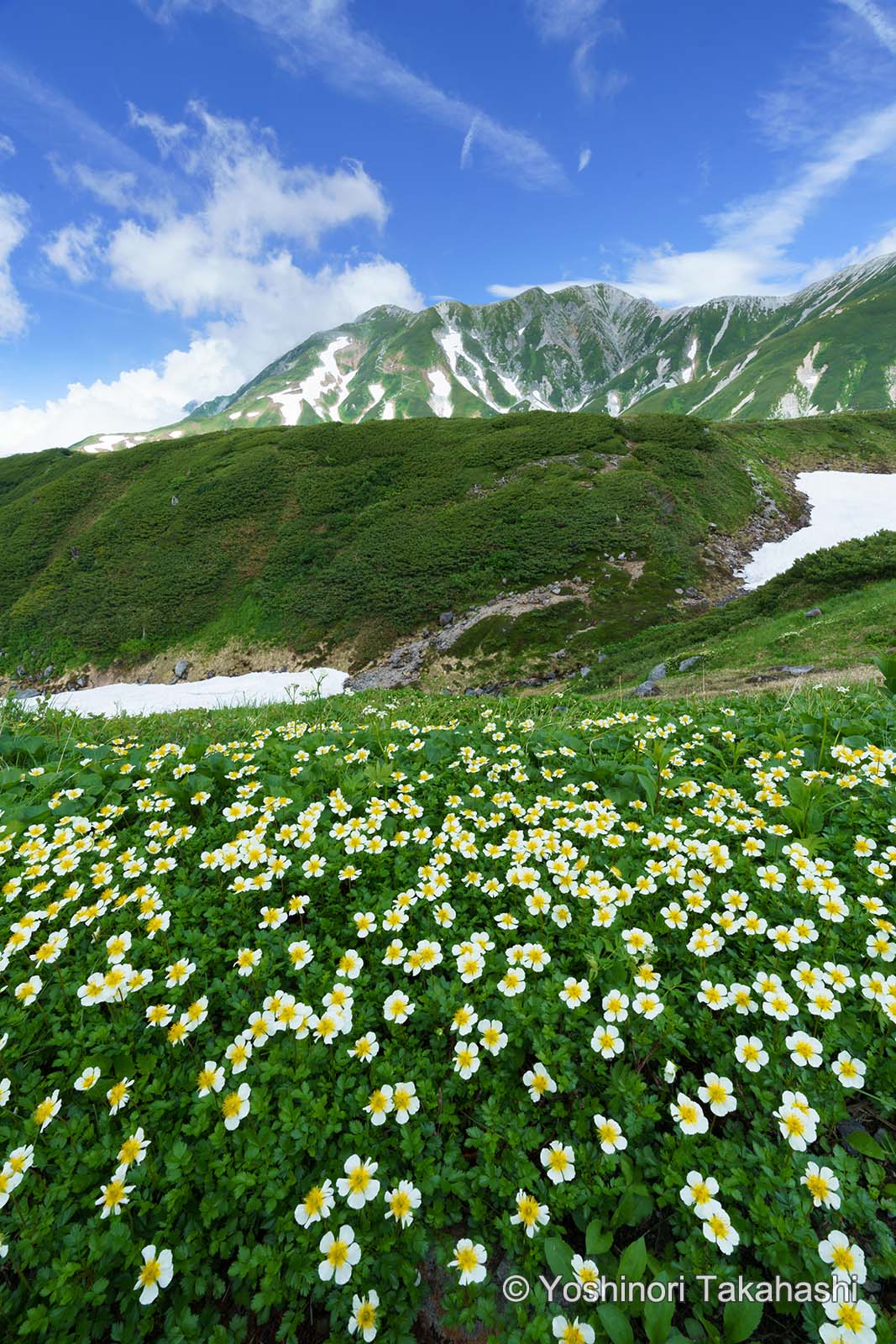
SONY α7R IV / FE16-35mm F2.8 GM / F16 1/45 s ISO-400
The fourth day was mostly cloudy with occasional glimpses of sunshine. The day after descending from Mt. Tateyama, we headed to Shomyo Falls at the foot of the mountain. The waterfall with the highest drop in Japan has an overwhelming amount of water, and the shape of the mist speaks for itself. In order to capture its power, I used a high-speed shutter to freeze the flow. At first glance, the flow of the waterfall appears to be constant, but in fact it is not. As the water flow alternates between high and low, it is necessary to keep the camera steady in order to be aware of the shape of the mist and wait for an opportunity. Depending on whether the sun was shining or not, I ended up taking photos in the same place for about an hour.
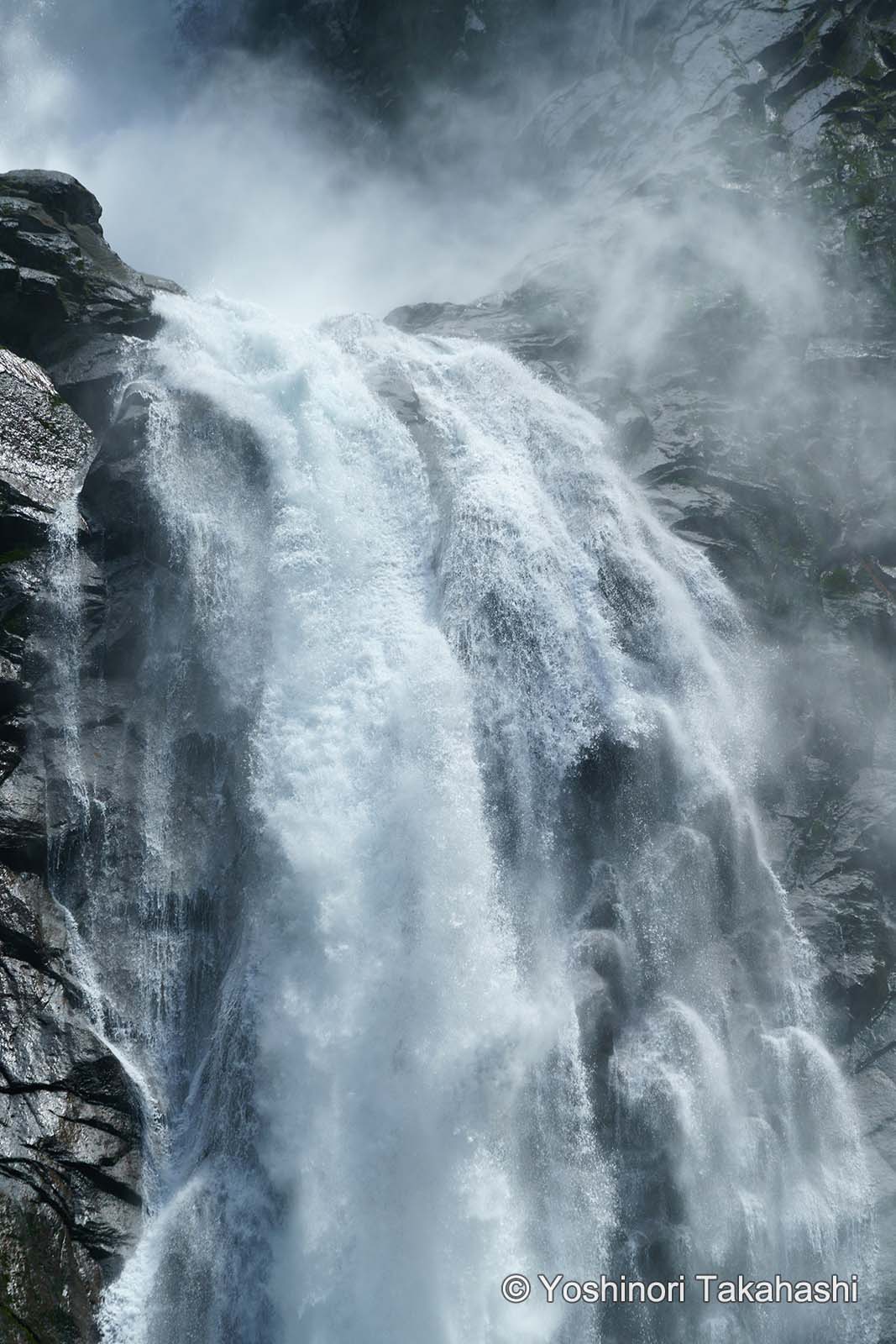
SONY α7R IV / FE100-400mm F4.5-5.6 GM OSS / F5.6 1/2000 s ISO-400
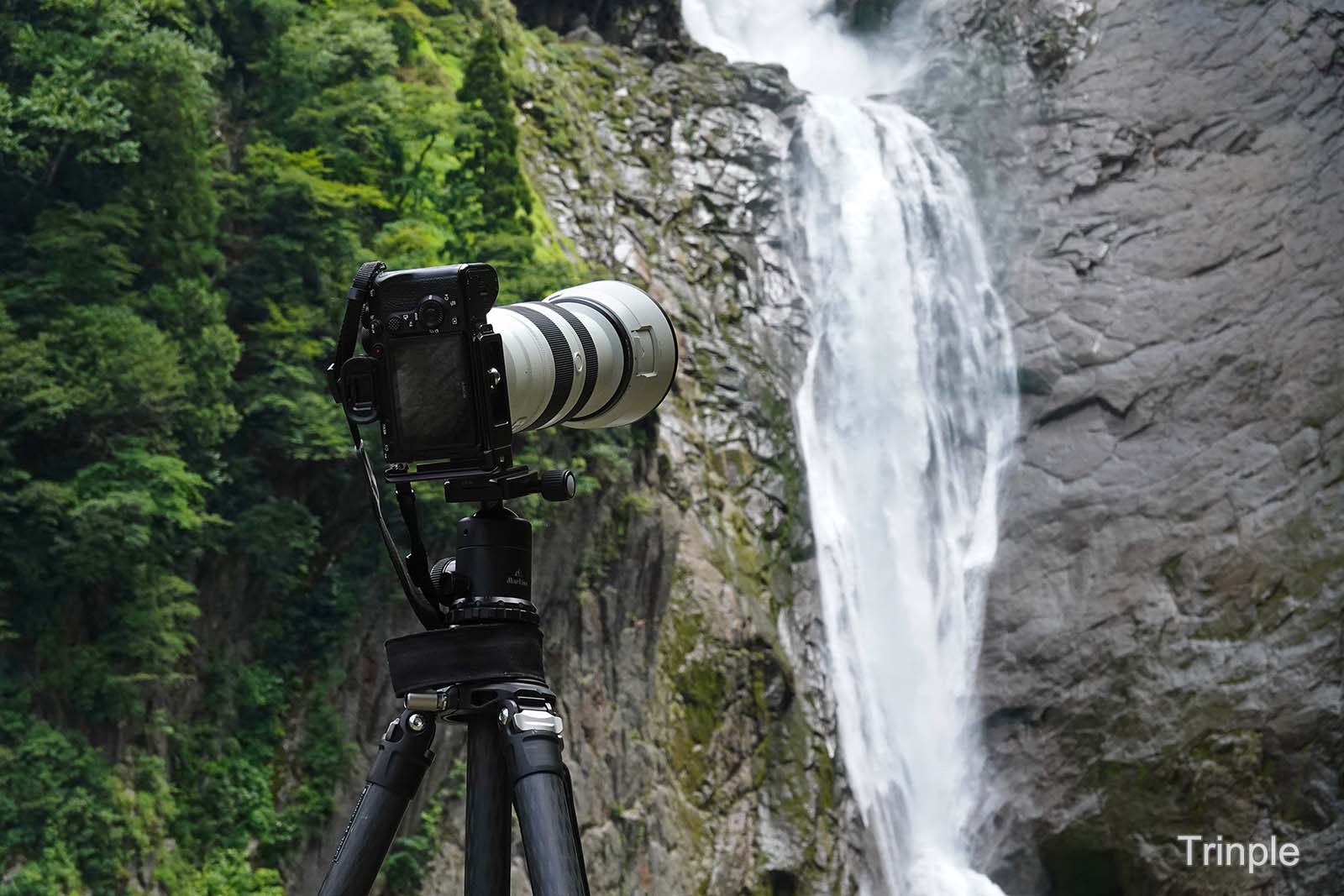
Recently I started using the lens foot LS-20 for the SEL100400GM lens. The center of gravity is lower than when the plate is attached to the standard tripod mount, which increases stability, and the lower tripod mount makes it easier to store in a bag.
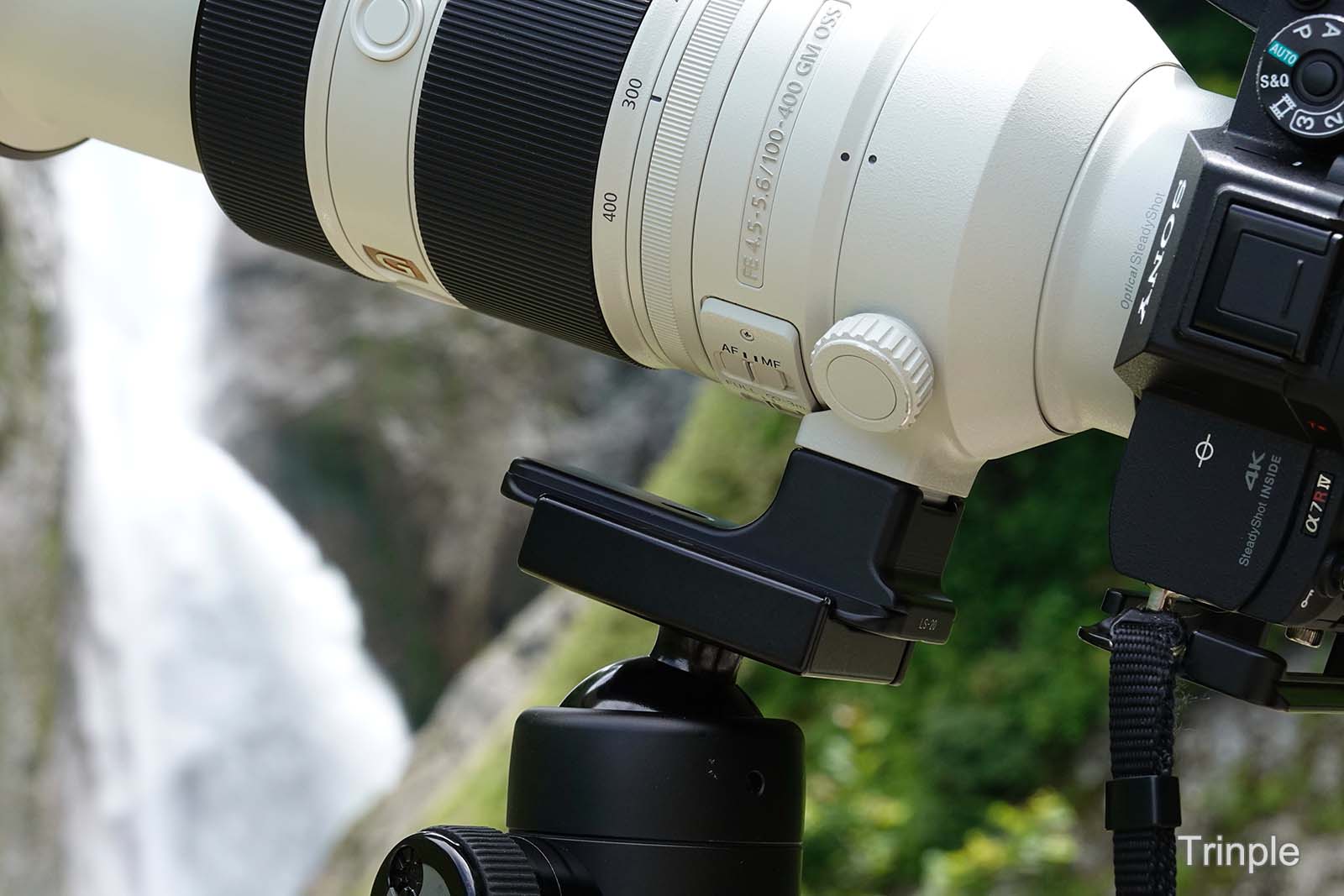
After shooting at Shomyo Falls, I drove towards my home in Nara, but I was interested in Ryusoga Falls in Fukui Prefecture, so I decided to stop by. I made it just in time to see the evening light, but there wasn't much time before the waterfall was in shade. When shooting speed is required, I find the quick-turn knob and Arca-Swiss compatible plate very convenient, as they can be quickly attached and detached with just one turn of the knob.
These days, there are many Arca-Swiss compatible products, but the combination of Markins is still the best. Of course, the vertical and horizontal switching is also perfect. In addition, the Markins plate is slightly rounded, so I like that it doesn't get in the way even when hanging from the shoulder when shooting handheld.
These days, there are many Arca-Swiss compatible products, but the combination of Markins is still the best. Of course, the vertical and horizontal switching is also perfect. In addition, the Markins plate is slightly rounded, so I like that it doesn't get in the way even when hanging from the shoulder when shooting handheld.
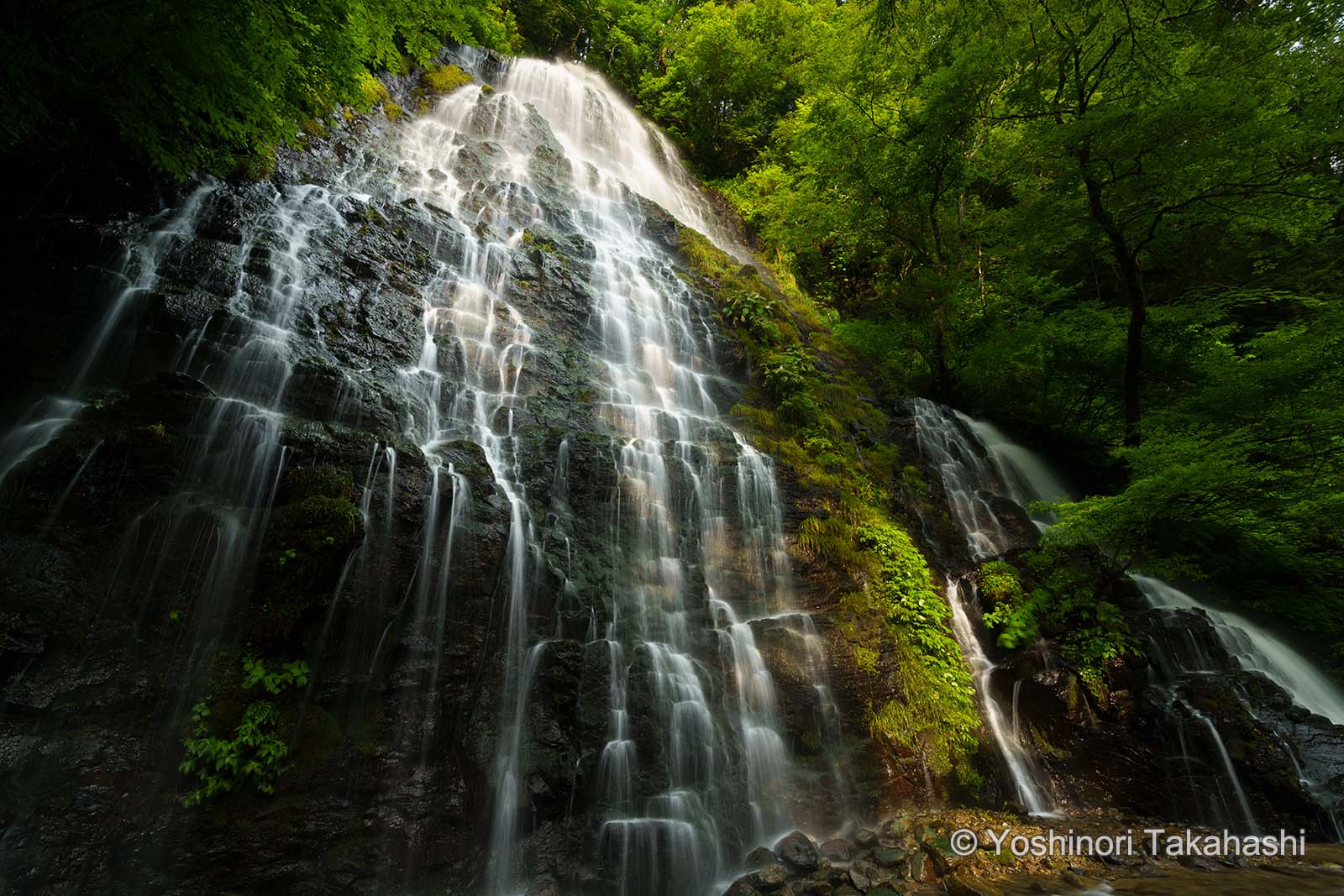
SONY α7R IV / FE16-35mm F2.8 GM / F11 0.5 s ISO-200
Because there is a difference in brightness between the top and bottom of the waterfall, a soft half ND filter is used to adjust the light and dark balance. Markins heads and tripods are indispensable for filter work as well.
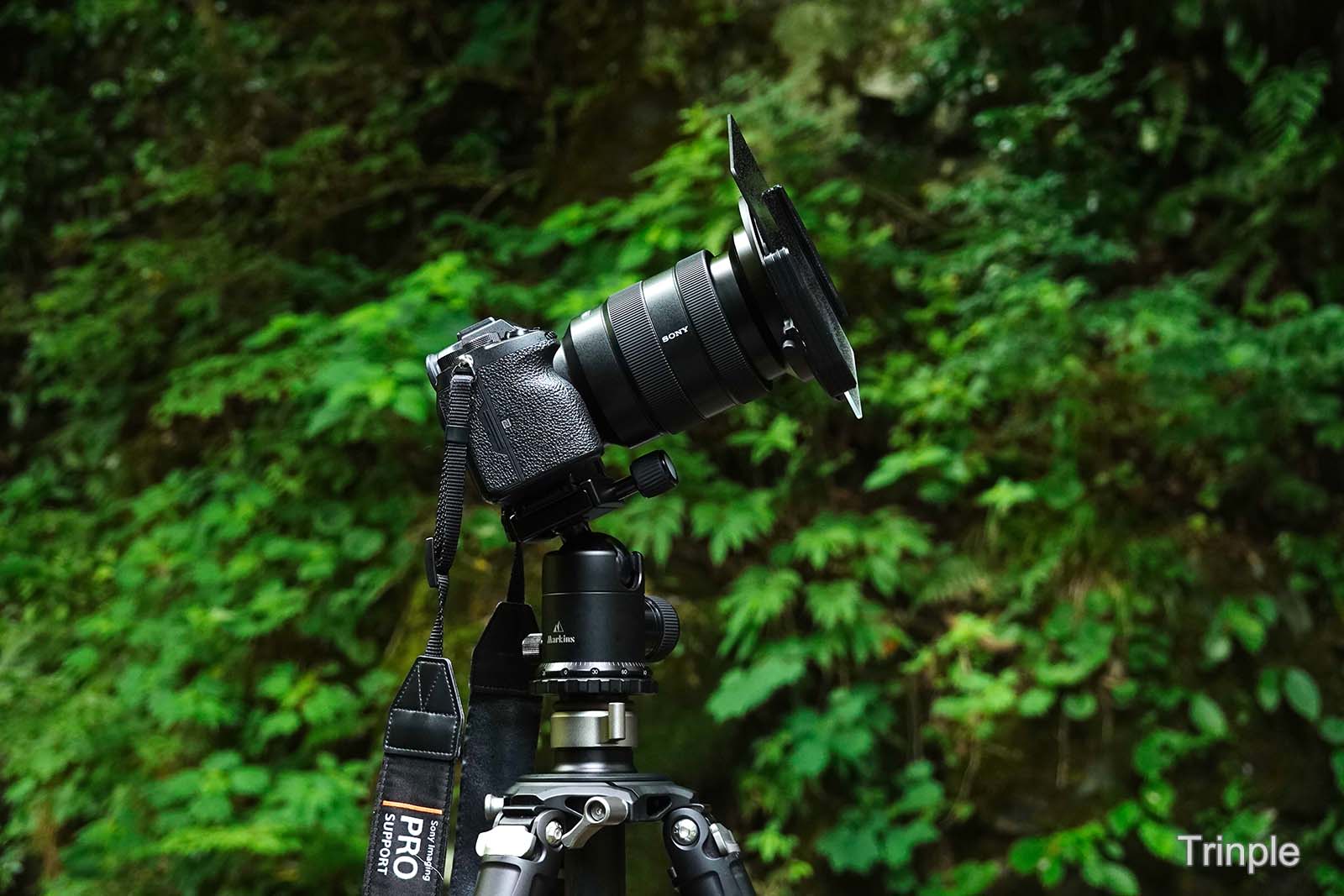
Although it was a short four-day trip, we were grateful for the fair weather and headed home.
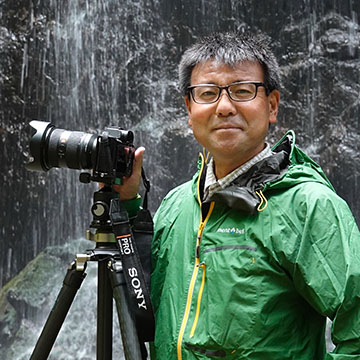
Yoshinori Takahashi
Born in Nara Prefecture in 1970. In 2000, became a freelance photographer and established a photography studio, Photo Kasuga. Mainly produces landscape photographs for calendars and tourist posters. Provides photographs and writes articles for photography magazines and publications. In addition to photographing the hometown of Nara Prefecture, continues to photograph all over Japan, focusing on the theme of the melody woven by nature.
Member of the Japan Professional Photographers Society (JPS)Member of the Japan Landscape Photographers Association (JSPA)







